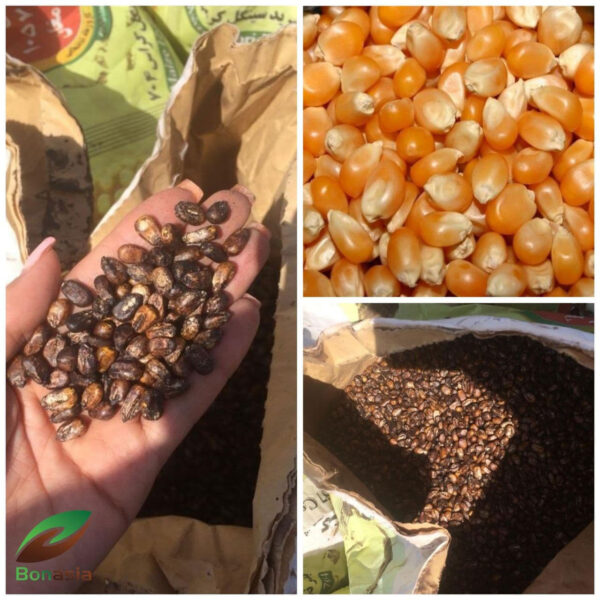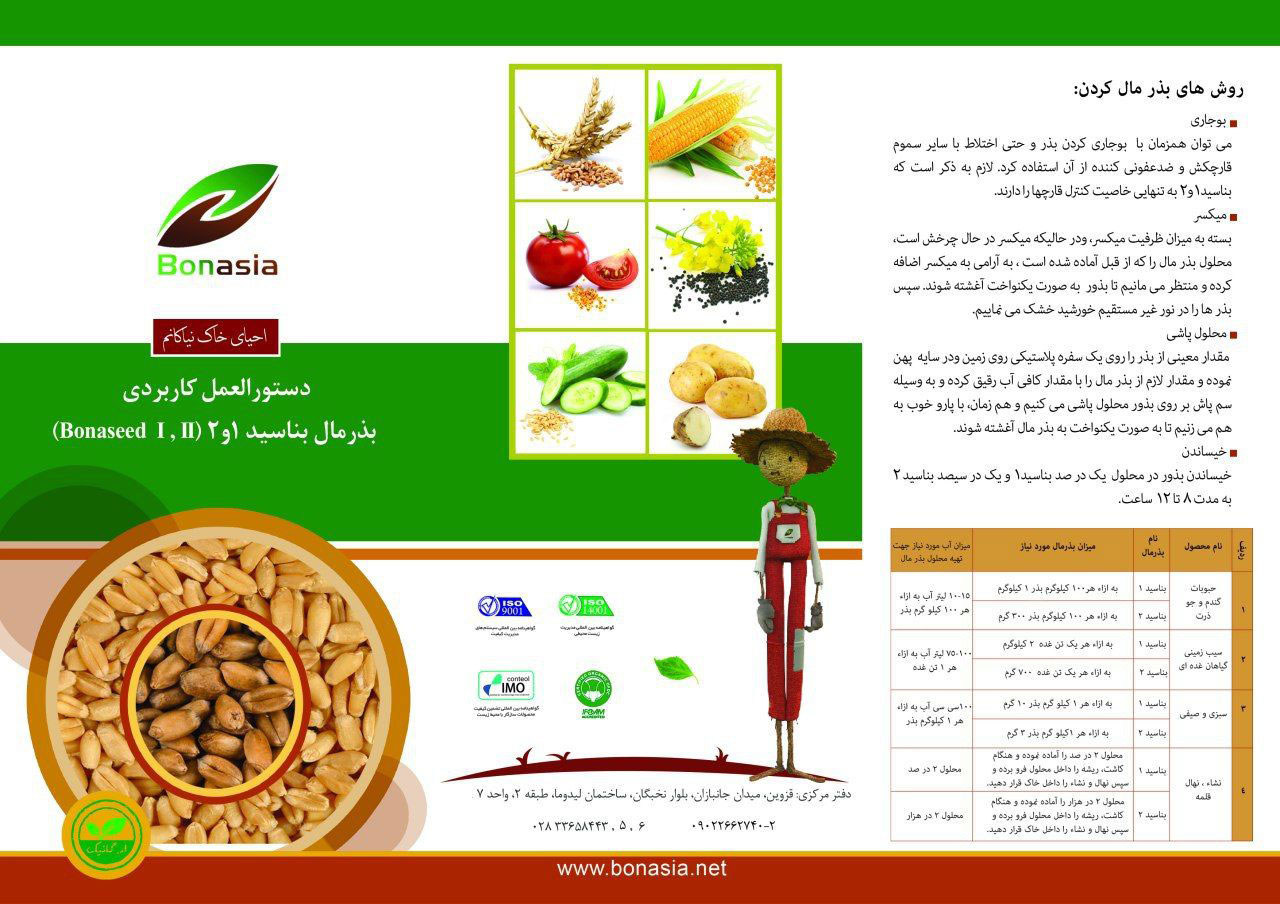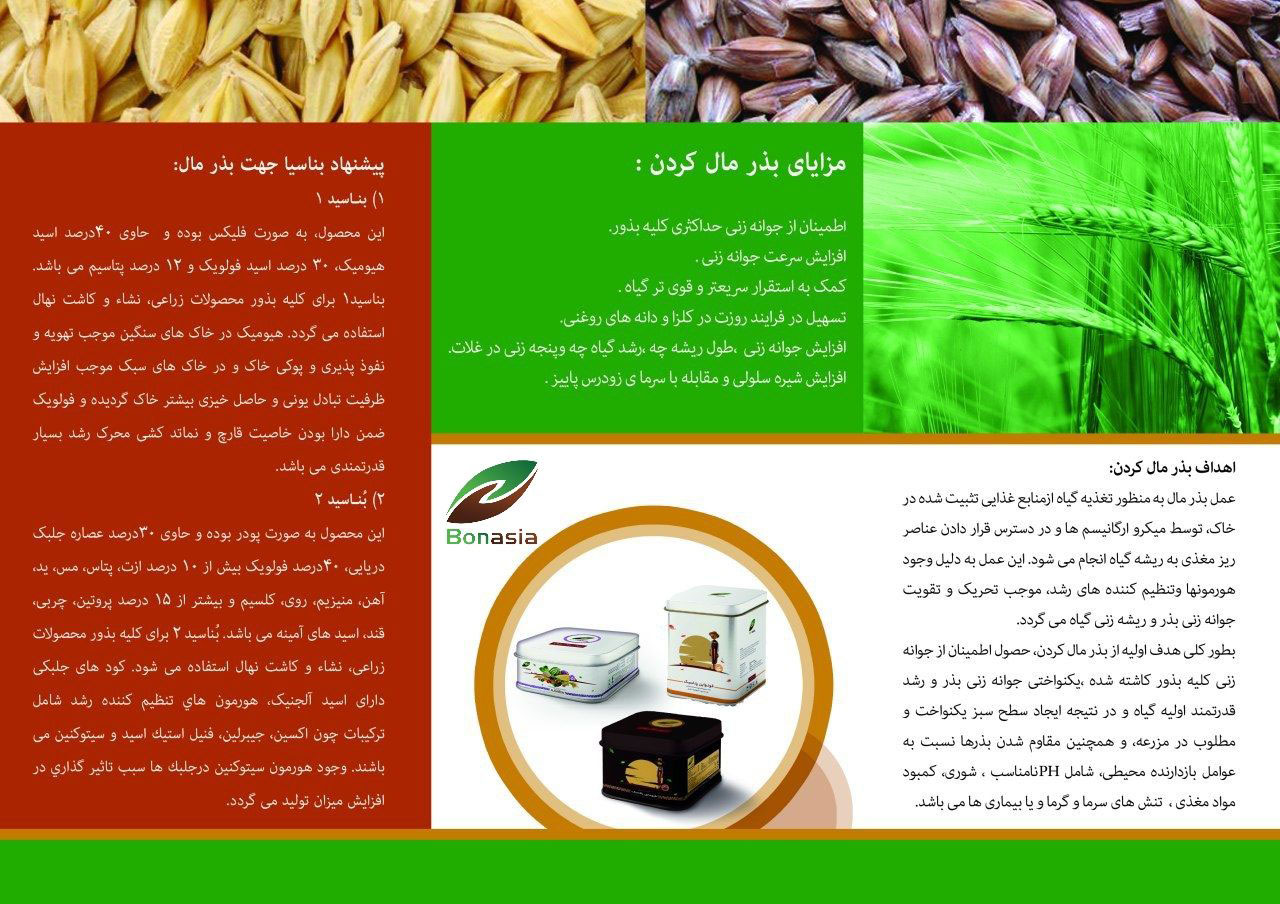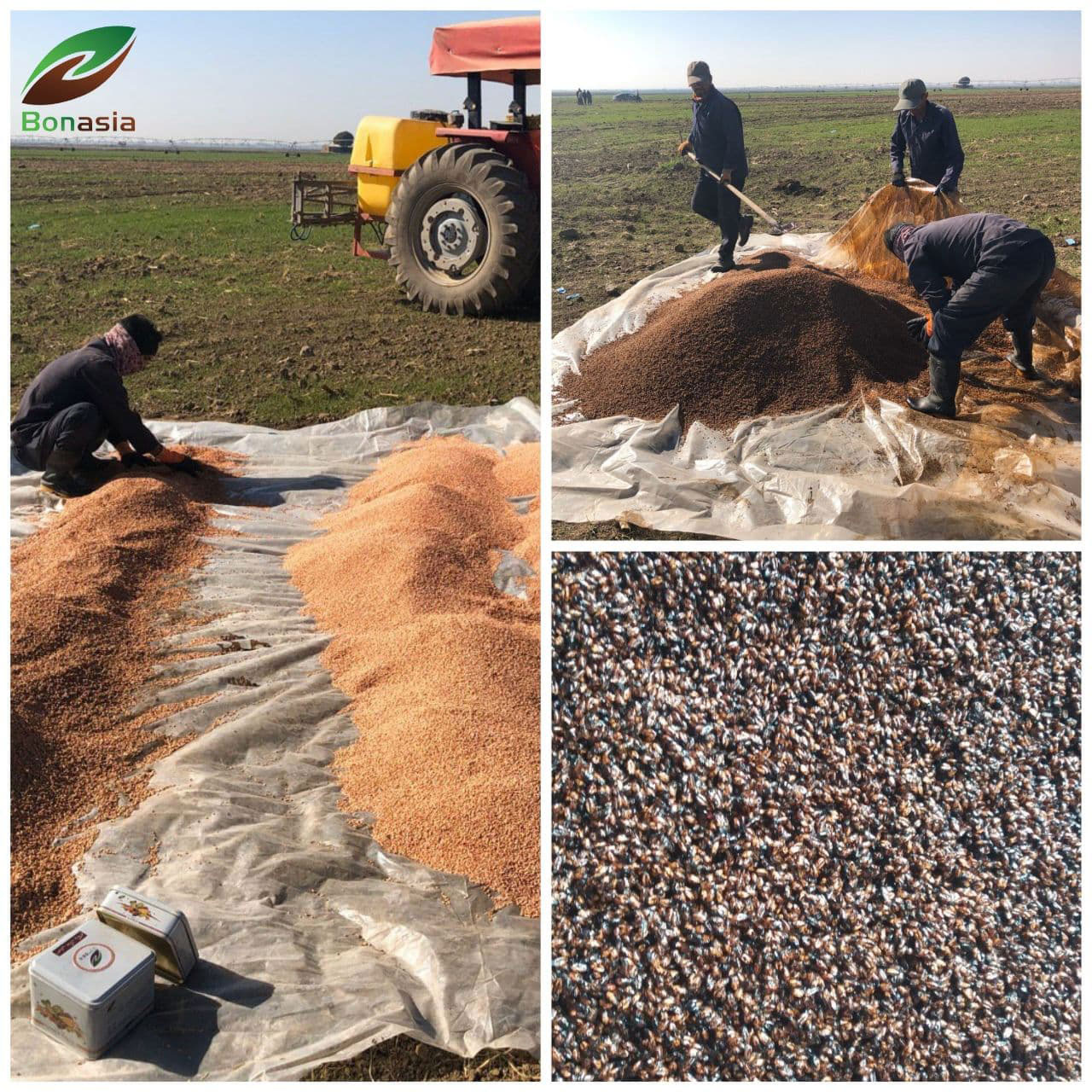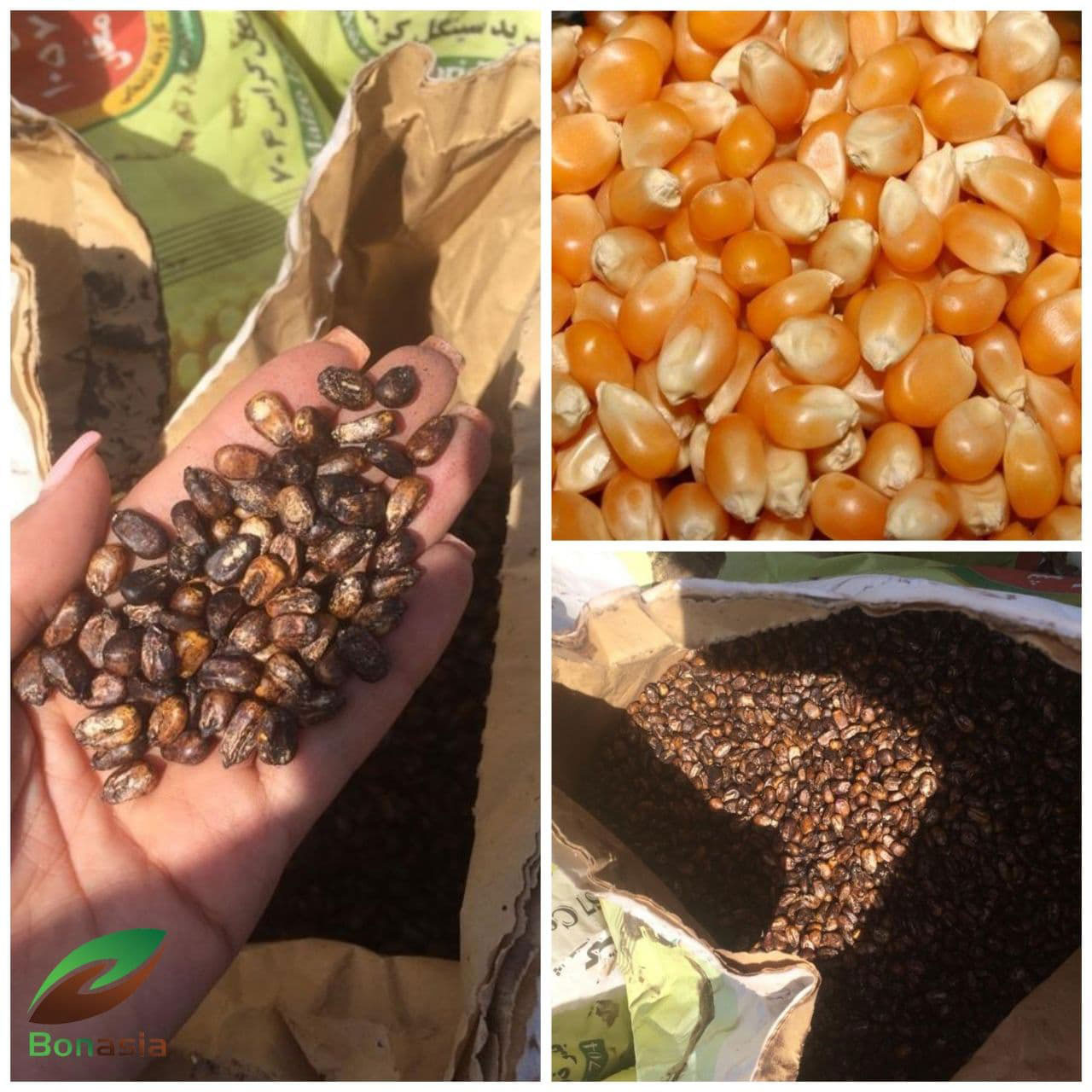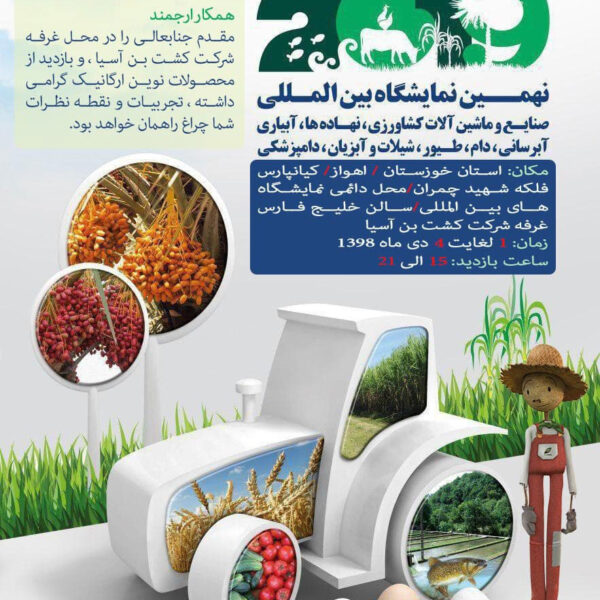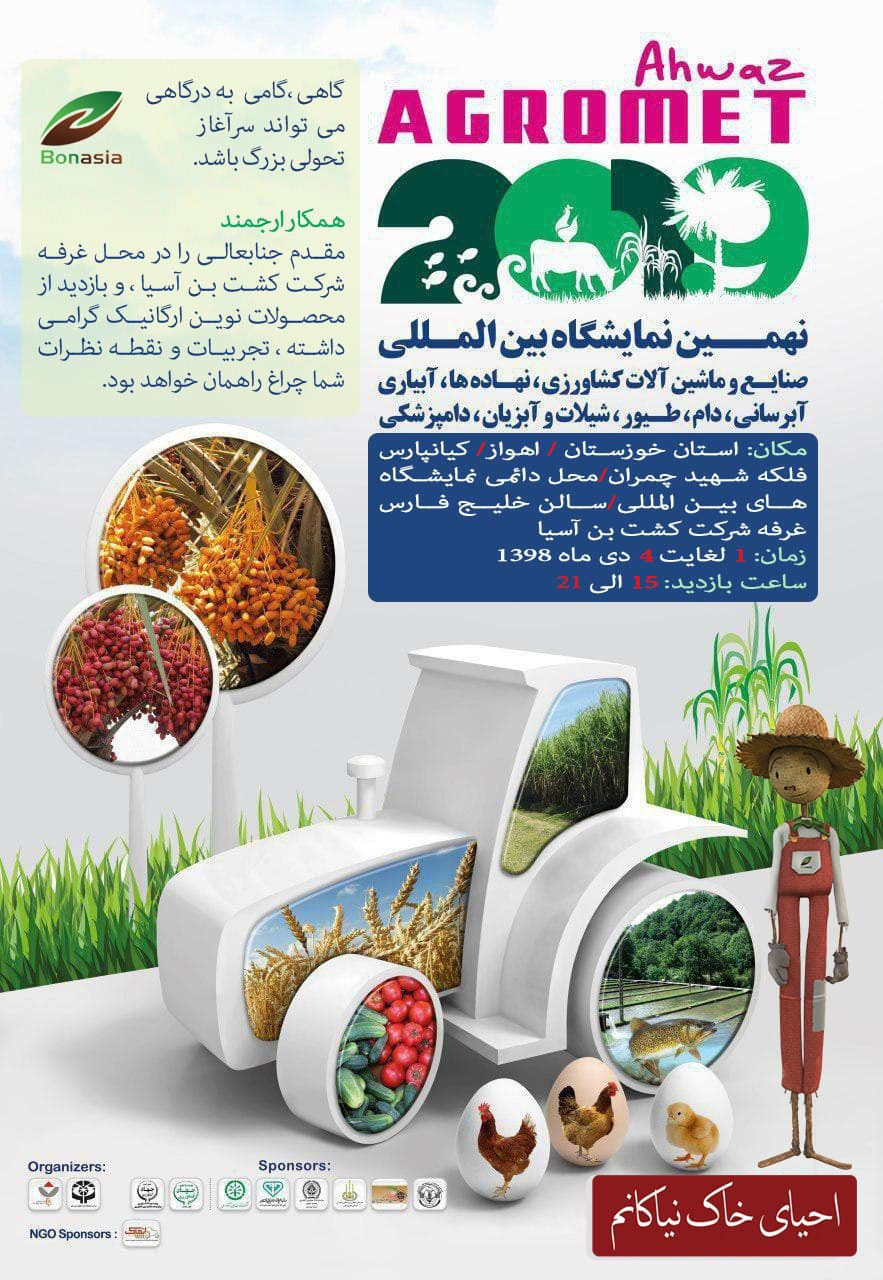Carrying out experimental operations of organic control of olive flies without the use of chemical pesticides, using foliar application of liquid sulfur and sulfur and table, in one of the traditional gardens of the college, Tarom Sofla region.
By order of the Agriculture Commission of Qazvin Province, consisting of the Governor’s Office, the Chamber of Commerce and the Plant Protection Department of the province.
In two stages, foliar spraying was carried out under the supervision of Jihad Tarom Sofla, and despite the sensitivity of the cultivar to the olive fly, the amount of damage was reduced to one-fifth compared to the adjacent control garden.
bonasia
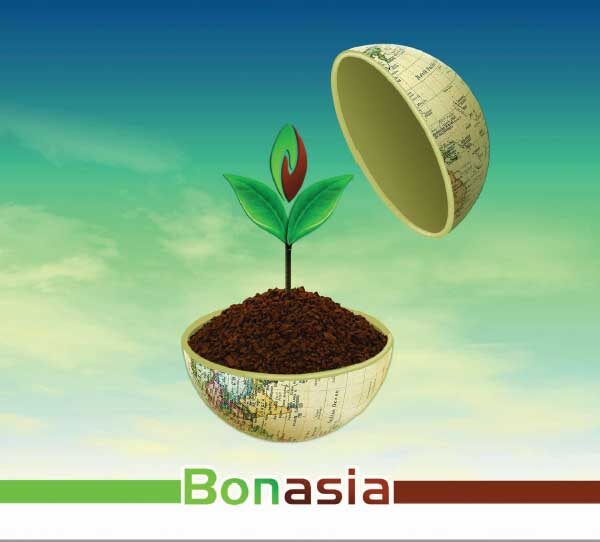
Experimental operation of organic control of olive flies

Eleventh specialized exhibition of agriculture and related industries – Qazvin
Presence of Bonasia in the 11th specialized exhibition of agriculture and related industries (machinery, tools, inputs, seeds, greenhouses, agriculture, equipment, gardening, irrigation and water supply, fertilizers, pesticides, seedlings)
Photo report of the visitors of Bonasia field in the specialized exhibition of agriculture and related industries of Qazvin province
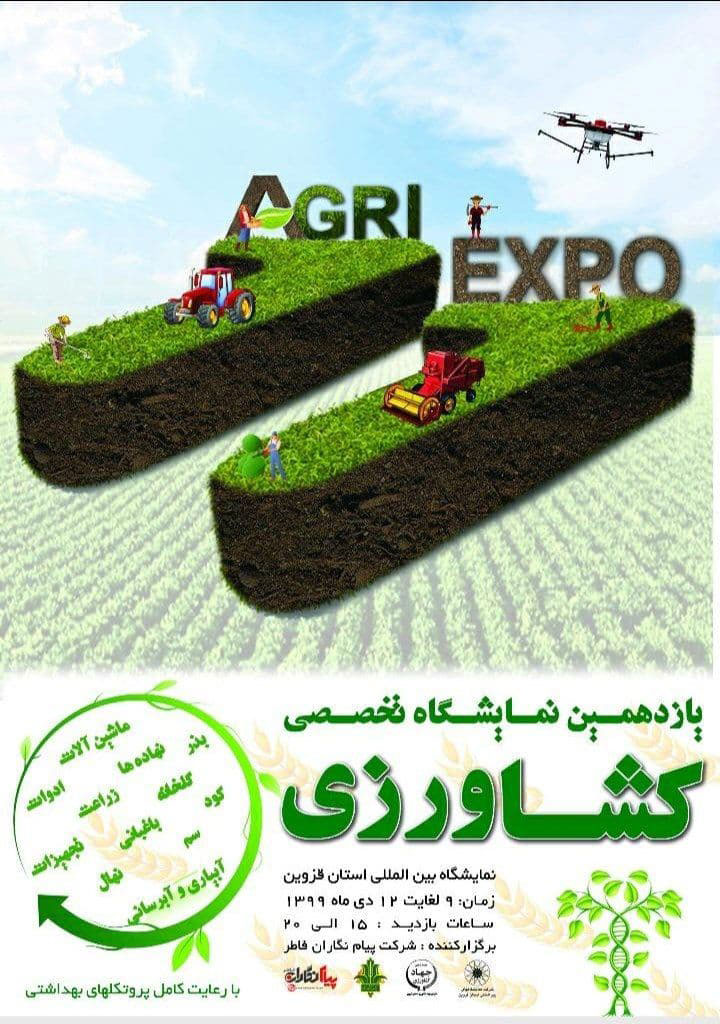

Effect of NPK on the plant
potassium also known as potash it’s one of the three essential macronutrients potassium plays an essential role in ensuring healthy crops and optimal yields. Its required for the activation of over 80 plant enzymes.
It’s responsible for improving a plant’s water use from Roots to shoots through the regulation of photosynthesis and transpiration.
potassium also Fosters nutrient uptake. enhance is nitrogen use and increases protein production .boosting overall plant health and a plant’s ability to withstand disease , pest and drought stress without a doubt proper potassium management is critical to ensuring healthy crops optimizing yield and increasing profit potential. but which source is the best choice. potassium can come from many sources but only Potassium plus sulfur also known as sulfate of potash stands apart as the Premier Source .
let’s take a look at some of the factors to consider.
potassium plus SOP or Muriate of potash MOP offer more potassium than other commonly used sources.
the additional nutrients in these fertilizers also factor into their overall value . potassium plus contain sulfur often referred to as the fourth Macronutrient .
it plays a key role in a variety of functions that promote optimal growth and development and when delivered in the sulfate form as it is with potassium plus it is readily available for plants uptake.
on the other hand MOP contains extremely high levels of chloride and salt excess chloride can accumulate around root systems , block uptake of essential nutrients lower crop quality and reduce yields.
similar to Chloride is salt index fertilizers with high salt index can lead to damaging effects on crop development and soil systems .
on a k2o basis SOP which is virtually chloride free is the richest source of potash with the least salt , because of this sop provides added flexibility in application timing without the risks of soil salt buildup.
for all these reasons potassium plus sulfur has become the potassium source of choice for Growers who demand the highest quality crops and maximum yield

Auxin, a plant growth regulator
Auxin is one of the most important substances in the group of plant hormones, which regulates plant growth and metabolism. This substance is generally stored in the vegetative organs of plants such as apical root meristems (growing root cells), stems and flower buds that are developing, and causes the growth and development of leaves and seed germination. In addition, experiments performed by Darwin, Boysen, and Jensen on oat seedlings showed that auxins at the tips of the branches had a significant effect on stem growth as well as its response to stimuli such as sunlight. In this experiment, oat seedlings were exposed to low light. Phototropism (tendency towards light) showed that the plant stem coleoptile (protective sheath) was inclined towards the light source. However, when the coleoptile tip was cut, the plant did not react to the light stimulus. These studies have conclusively shown that this effect is due to the presence of auxin in the apical meristem. , Impregnated, the rooting process is accelerated. The use of auxins can provide partonocarpy, which is the production of fruit without fertilization, and leads to the formation of seedless fruits.

Transformations Of fertilizer nitrogen in the soil
Introduction
Nitrogen when applied to soil undergoes transformation processes before becoming available for plants. the following animation explains the soil nitrogen cycle for two different sources of nitrogen: ammonium nitrate and urea.
The first case
Nitrogen transformations when applying ammonium nitrate
Application of fertilizers, containing mineral nitrogen as ammonium and nitrate.
Organic fertilizers contain mostly complex forms of N and ammonium Uptake of nitrate is rapid due to the high particle mobility. Most planet therefore prefer nitrate over ammonium Uptake of ammonium is slower than that of nitrate. Ammonium is bound to clay particles in the soil and roots have to reach it. Most of the ammonium is therefor nitrified before it is taken-up by plants.
Nitrification by soil bacteria converts ammonium into nitrate between a few days and a few weeks .nitrous oxide and nitric oxide are lost to the atmosphere during the process.
Denitrification is favored by lack of oxygen (water logging).Soil bacteria convert nitrate and nitrite into gaseous nitrous oxide, nitric oxide and nitrogen .These are lost to the atmosphere
Immobilization transforms mineral nitrogen into the soil organic matter . Activity of soil microbes is mainly stimulated by ammonium. Immobilized nitrogen is not immediately available for plant uptake, but needs to be mineralized first.
Mineralization of soil organic matter (and manure) releases ammonium into the soil.
Ammonia volatilization occurs when ammonium is converted to ammonia and lost to the atmosphere. A high soil PH level and temperature favor conversion of ammonium to ammonia. If conversion takes place at the soil surface, losses are highest.
Leaching of nitrate occurs mainly during winter and Fallow periods when percolating rainfall washes residual and mineralized nitrates below the root zone. Accurate fertilization increases nitrogen use efficiency and reduces the risk of leaching during the growth period and afterwards.
The second case
Nitrogen transformations when applying urea
Application of fertilizers, containing mineral nitrogen as urea. Organic fertilizers contain mostly complex forms of nitrogen and ammonium.
Hydrolysis of urea by soil enzymes converts urea into ammonia and CO2 gas. Depending on temperature, hydrolysis takes a day to a week. The soil PH around the urea granules strongly increases during this process, favoring ammonia volatilization.
Ammonia volatilization occurs when ammonium is converted to ammonia and lost to the atmosphere. A high soil PH level and temperature favor conversion of ammonium to ammonia. If conversion takes place at the soil surface, losses are highest. These conditions are met when urea is spread and not immediately incorporated.
Nitrification, by soil bacteria converts ammonium into nitrates in between a few days and a few weeks. Nitrous oxide and nitric oxide are lost to the atmosphere during the process.
Uptake of nitrate, is rapid due to High particle mobility. Most plants therefor prefer nitrate over ammonium.
Uptake of ammonium is slower than that of nitrate. Ammonium is bound to clay particles in the soil and roots have to reach it . Most of the ammonium is therefor nitrified before it is taken-up by plants.
Denitrification is favored by lack of oxygen(water logging). Soil bacteria convert nitrate and nitrite into gaseous nitrous oxide, nitric oxide and nitrogen. These are lost to the atmosphere.
Immobilization transforms mineral nitrogen into soil organic matter. Activity of soil microbes is mainly stimulated by ammonium. Immobilized nitrogen is not immediately available for plant uptake, but needs to be mineralized first.
Mineralization of soil organic matter (and manure)releases ammonium into the soil.
leaching of nitrate occurs mainly during winter and Fallow periods when percolating rainfall washes residual and mineralized nitrates below the root zone. Accurate fertilization increases nitrogen use efficiency and reduces the risk of leaching during the growth period and afterwards.
Ammonium nitrate is taken-up directly by plants while urea first needs to be converted. Ammonium nitrate therefor offers a higher nitrogen use efficiency than urea. Ammonium nitrate thus reduces losses and environmental impact. .

Prevent nitrogen leaching in soil
Ammonium has limited mobility and is not at risk of leaching. Nitrate is Mobile in the soil and rapidly absorbed by plants. Ammonium, UAN and UREA are converted into nitrate before absorption.
Most of nitrogen is directly absorbed by plants. A little part of it is immobilized in soil organic matter. The nitrogen in soil organic matter is not lost, but it needs to be mineralized before it can be taken up by plants.
Part of immobilized nitrogen is mineralized during the growing season. Part of it is mineralized later. Split nitrogen application would ensure rapid uptake of available nitrogen by plants and thus reduce immobilization.
With good agricultural practice, only a very small portion of applied fertilizer nitrogen can be found in the residual nitrate pool upon harvesting. Manure contains nitrogen mainly as organic compounds, building up soil organic matter. This nitrogen is not immediately available. Manure, especially slurry, also contains some mineral nitrogen, mainly as ammonium. The proportion of mineral nitrogen in manure varies depending on its sources.
Mineralization of soil organic matter contributes to soil nitrogen supply. Mineralization rates are variable, For example, mineralize nitrogen for grassland can exceed 300 k/ha ( kg per hectare).
After harvest, however, microbes find optimum conditions in the humid and warm autumn soil. Since there are no more plants to use the nitrate produced, it is prone to leaching.
During the growth period, mineralized nitrogen contributes to plant nitrogen uptake. Determining soil nitrogen supply accurately by sampling and use of precision farming tools avoids over-fertilization and reduces leaching.
Autumn and winter rainfall stocks up the water table. Most of the residual nitrate is laeched in these two seasons. During spring and summer there s usually little rain, and evaporation from the plough layer counteracts leaching. Keeping the residual nitrate pool as small as possible is the best strategy against laechinga
Conclusion :
Leaching occurs when un-used mineralized nitrogen is washed out in ground water during winter time. Nitrogen from mineral fertilizer, especially when applied as nitrate, is immediately available for plants, Tailored and split application of mineral fertilizer reduces the residual nitrate pool after harvest and thus prevents leaching


